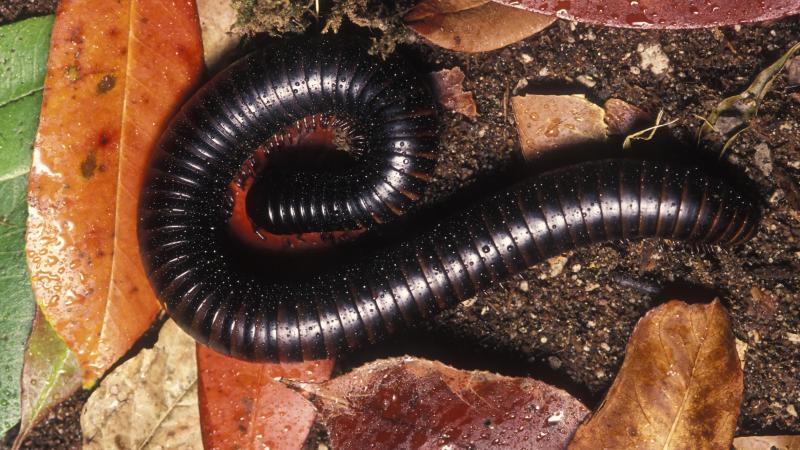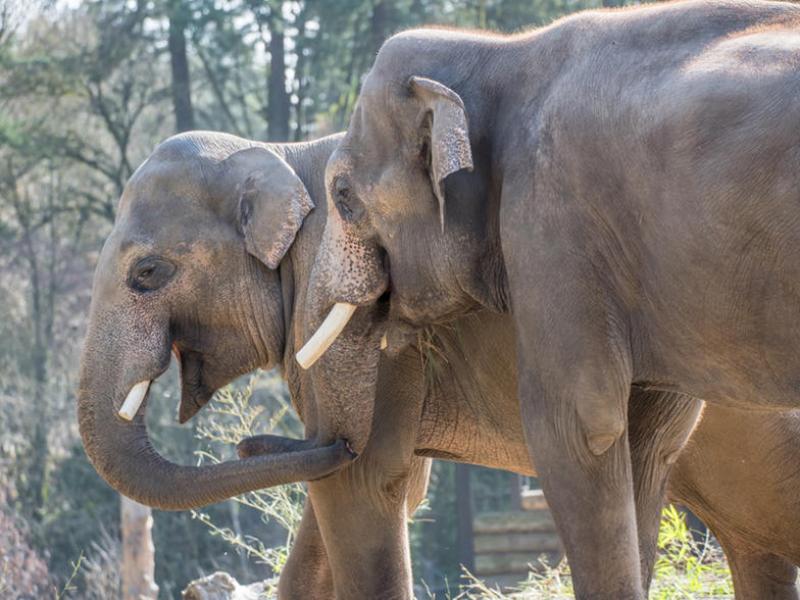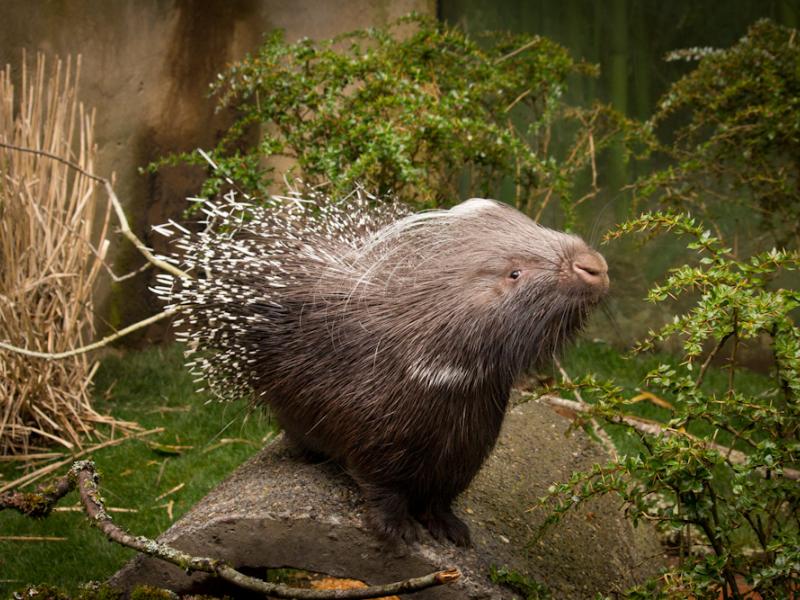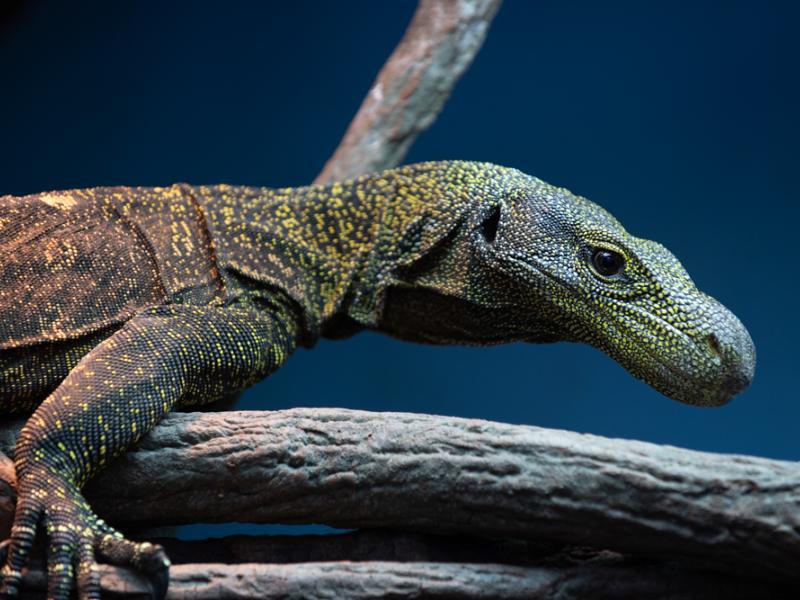
The Giant African millipede lives in rainforests.
Millipede lingo
- Millipede: mille means thousand; pede means feet.
- Centipede: centi means hundred; pede means feet.
- A detritivore such as the millipede is an herbivore that eats decaying plant material.
Millipedes and centipedes: Some differences
- Millipedes have four legs per body segment; centipedes have two.
- Millipedes are slow-moving herbivores. Centipedes are fast-moving carnivores; they're often brightly colored to warn predators of their venom.
- Millipedes do not bite or sting; centipedes have venom in their fangs.
Millipede behavior and facts
- The giant African millipede is the largest of the world's 10,000 species of millipedes.
- Of the world's millipedes, leg counts range from 36 to 400. They don't actually have 1,000 legs, despite the name. A giant African millipede may have 30 to 40 segments, with 4 legs per segment.
- Giant African millipedes are nocturnal, moving slowly on the rainforest floor, chewing up and recycling debris.
- When threatened, they curl up in a spiral.
From birth to death
- Mating: the male winds around the female.
- Fertilized eggs are laid in holes in the ground.
- After emerging from the eggs, the young are white with only a few segments.
- Lifespan: 5 to 7 years
Vital statistics
Length: up to 12 inches
Status
Not listed.
Millipedes the Oregon Zoo and you
Giant African millipedes live in the Insect Zoo. They munch on a diet of fruit and lettuce.




